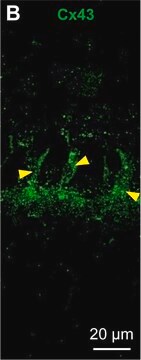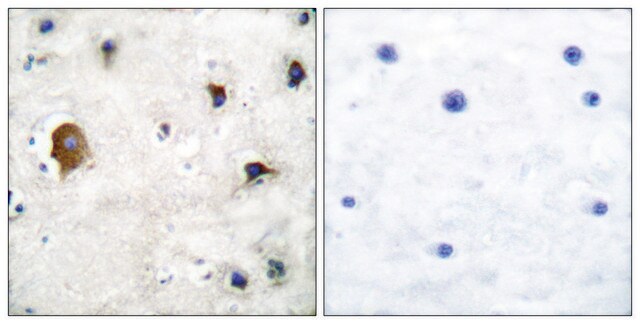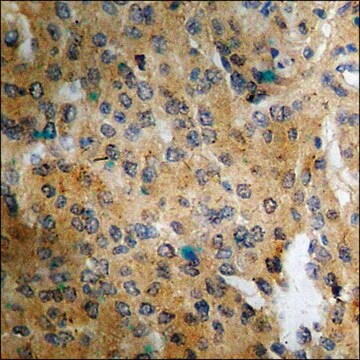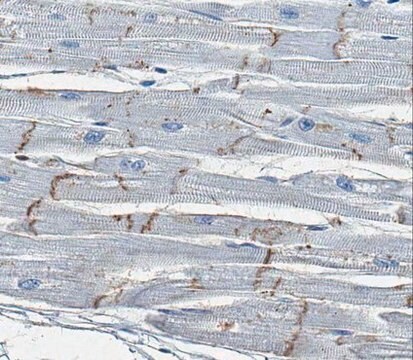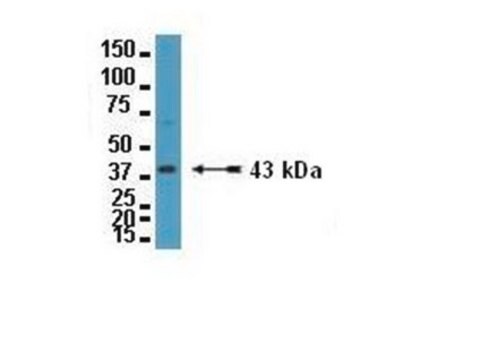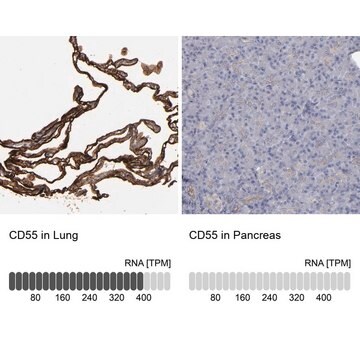AB1728
Anti-Connexin 43 Antibody
CHEMICON®, rabbit polyclonal
Sinônimo(s):
Gap Junction alpha-1 Protein (CxA-1)
About This Item
Produtos recomendados
Nome do produto
Anti-Connexin 43 Antibody, CT, cytosolic, Chemicon®, from rabbit
fonte biológica
rabbit
Nível de qualidade
forma do anticorpo
affinity isolated antibody
tipo de produto de anticorpo
primary antibodies
clone
polyclonal
purificado por
affinity chromatography
reatividade de espécies
human, rat, mouse
embalagem
antibody small pack of 25 μg
fabricante/nome comercial
Chemicon®
técnica(s)
ELISA: suitable
immunofluorescence: suitable
immunohistochemistry: suitable
immunoprecipitation (IP): suitable
western blot: suitable
nº de adesão NCBI
nº de adesão UniProt
Condições de expedição
ambient
modificação pós-traducional do alvo
unmodified
Informações sobre genes
human ... GJA1(2697)
Descrição geral
Especificidade
Imunogênio
Aplicação
2-10 µg of a previous lot was used in immunoprecipitation.
ELISA:
A previous lot of this antibody was used at 1:10,000-100,000 dilution using 50 - 100 ng Cx43 control peptide (Catalog number AG636) per well.
Optimal working dilutions must be determined by end user.
Cell Structure
Adhesion (CAMs)
Qualidade
Western Blot Analysis: 1:500 dilution of this lot detected CONNEXIN 43 on 10 μg of Huvec lysates.
Descrição-alvo
forma física
Armazenamento e estabilidade
Nota de análise
Positive Control: Heart tissue, mouse brain tissue lysate.
Outras notas
Informações legais
Exoneração de responsabilidade
Não está encontrando o produto certo?
Experimente o nosso Ferramenta de seleção de produtos.
recomendado
Código de classe de armazenamento
10 - Combustible liquids
Classe de risco de água (WGK)
WGK 2
Ponto de fulgor (°F)
Not applicable
Ponto de fulgor (°C)
Not applicable
Certificados de análise (COA)
Busque Certificados de análise (COA) digitando o Número do Lote do produto. Os números de lote e remessa podem ser encontrados no rótulo de um produto após a palavra “Lot” ou “Batch”.
Já possui este produto?
Encontre a documentação dos produtos que você adquiriu recentemente na biblioteca de documentos.
Nossa equipe de cientistas tem experiência em todas as áreas de pesquisa, incluindo Life Sciences, ciência de materiais, síntese química, cromatografia, química analítica e muitas outras.
Entre em contato com a assistência técnica